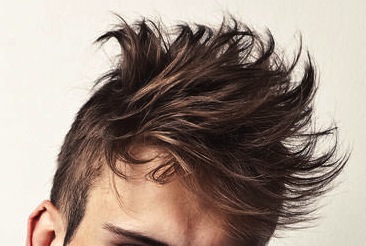Celebrate St. Patricks Day with Hair
/ If you are looking for a unique way to celebrate the Irish on St. Patrick’s Day this year, consider getting a new haircut. In this woodcut by Albrecht Druer from 1521, you can see the glib or “glybbe” haircut that was once popular with runners and kerns (Gaelic soldiers during the middle ages).
If you are looking for a unique way to celebrate the Irish on St. Patrick’s Day this year, consider getting a new haircut. In this woodcut by Albrecht Druer from 1521, you can see the glib or “glybbe” haircut that was once popular with runners and kerns (Gaelic soldiers during the middle ages).
For the ancient Irish runners this cut was a badge of honor, and also a thorn in the side of the English who hated it and wanted to have it outlawed.
To achieve this look, the hair at the back and side of the head is trimmed very short, while the front and top are kept long, giving you a large fringe to fall down over your face much like the forelock of a horse.
It might have looked a little like this image at left or, depending on the skill of your stylist, the image at right.
Whatever their hairstyle, fast and long-distance runners have long been appreciated by the Irish. According to Patrick Weston Joyce’s “A Social History of Ancient Ireland," Irish kings always kept runners in their employment as messengers or couriers, and sometimes they were women: “Finn Mac Dumail had a female runner who figures in the story of Dermot and Grania.”
In the time of Henry VIII, Pope Paul III had a number of “Rome-runners” (as opposed to "rum runners") or messengers who traveled back and forth between Ireland and Rome to keep the Pope informed about Reformation activity.
For the Irish Citizen’s Army founded in 1913 by James Connolly, the "Fianna Boys" were trained to act as messengers and runners during the actual uprising.
And, keeping the tradition going in 1984, John Treacy of Ireland, a graduate of Providence College in Rhode Island, won the Marathon Silver Medal in the 1984 Olympic Games in Los Angeles.
To read more about this, please visit the Irish Archaeology blog post, “16th Century Irish Hipsters.”
And have a delightful St. Patrick's Day!






